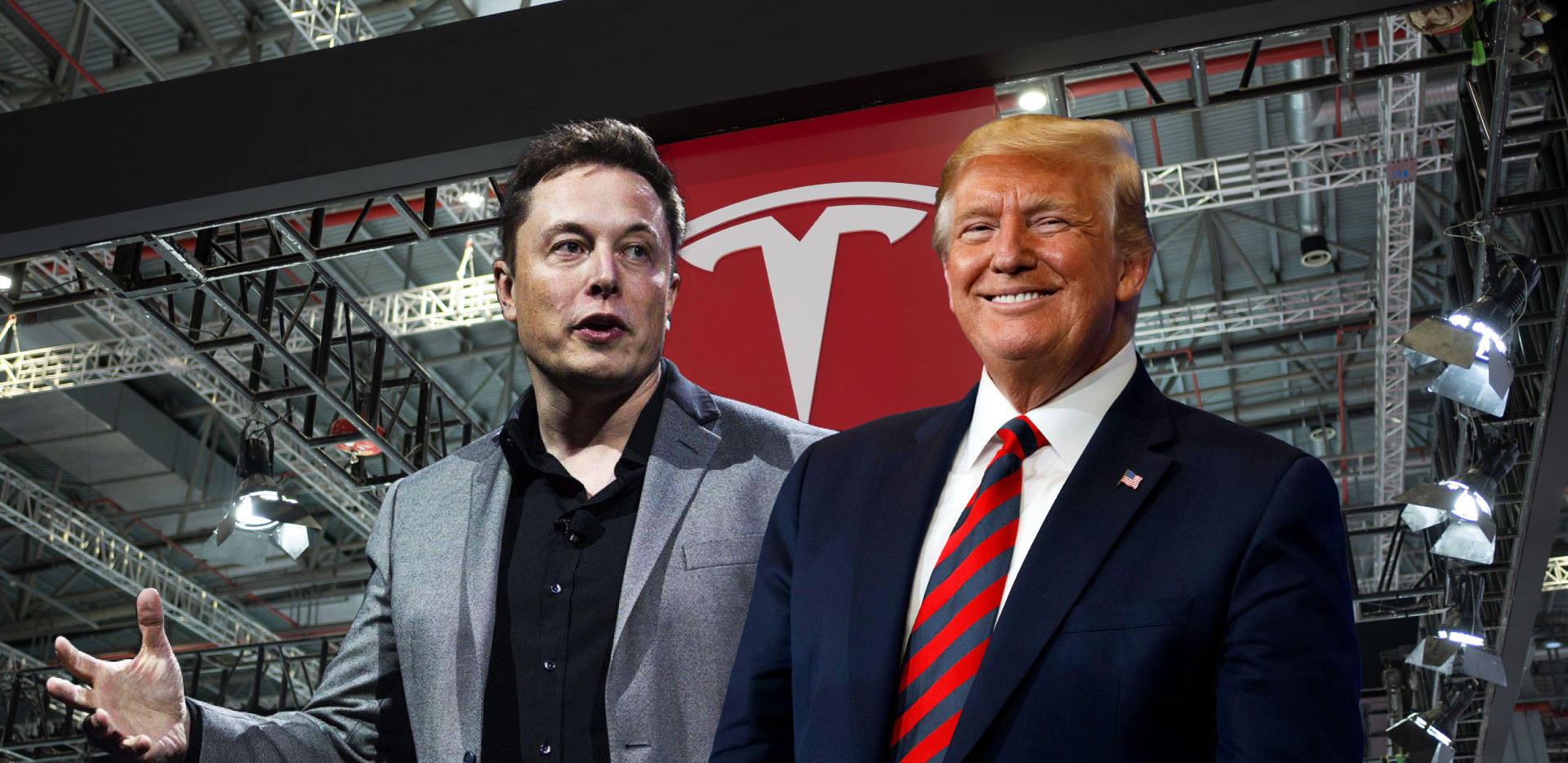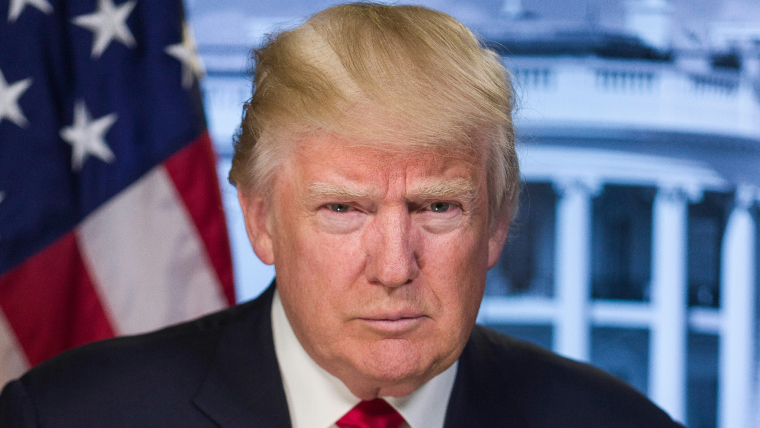By Sathyanarayana Kabirdas, Vice President – Mobility
The automotive industry is poised at a pivotal juncture as Donald Trump assumes the U.S. presidency, heralding an era that could redefine the landscape of U.S. car manufacturing. Automakers, regulators, and consumers alike are bracing for potential shifts in production priorities, regulatory frameworks, and market dynamics. Trump’s campaign promises emphasized bolstering American manufacturing, with a particular focus on reviving the industrial sector. But what will this mean for foreign carmakers, trade policies, electrification initiatives, and tariffs?

At the same time, a new player looms large over the industry: Tesla CEO Elon Musk, whom Trump has praised as a “super genius” and a “star.” Musk, a maverick visionary with significant sway over electric vehicle (EV) and autonomous technologies, could play a strategic role in shaping policies that impact everything from emissions standards to electric infrastructure. As U.S. automakers navigate an uncertain environment under Trump 2.0, they face a fundamental question: Is this the dawn of an American automotive renaissance, or the start of a complex struggle to keep up with global demands for sustainability? Will it be innovation or isolation?
U.S. Auto Industry: Innovation or Isolation?
A central component of Trump’s agenda involves promoting American manufacturing and reducing regulatory pressures on businesses, and the automotive industry is likely to benefit directly from this focus. U.S.-based automakers, particularly the “Big Three”—General Motors, Ford, and Stellantis—could see a relaxation in regulations. Trump has previously criticized federal mandates on emissions and fuel efficiency standards, framing these policies as economic burdens rather than environmental imperatives.
While a relaxation of environmental regulations might reduce short-term costs for U.S. automakers, it could also place them at odds with global trends toward sustainability. Many international markets are adopting stricter emissions standards, and U.S. automakers may have to develop separate vehicle models for domestic and foreign sales. This dual manufacturing strategy can complicate production lines and increase costs in the long term, even if it yields short-term savings.
Electrification Initiatives: Slowing Down the Transition
Perhaps the most contentious area under Trump’s presidency would be the ongoing push for electrification. The Biden administration prioritized the transition to EVs through programs like the Inflation Reduction Act (IRA), which provided tax credits to incentivize EV purchases and support infrastructure development. In contrast, Trump has indicated an intent to roll back such initiatives, calling such incentives “government overreach” and labeling the rapid shift to electrification as a “green scam.”
If, as is widely expected, Trump scales back federal support, U.S. automakers may dial back their ambitious EV goals in favor of their more traditional ICE portfolios. Some companies have spent billions to set up EV manufacturing plants, such as GM’s $2 billion renovation of its Detroit-Hamtramck facility. Reducing incentives could jeopardize the profitability of these initiatives, given the high costs of EV production and the limited economies of scale for newer technologies.
In contrast, for automakers like Toyota, which has been slow to adopt all-electric models, this shift could alleviate competitive pressures. It would allow the Japanese automaker more time to explore such solutions without facing a significant disadvantage.
Tariffs on Foreign Automakers: Repercussions of Protectionist Trade Policies
Trump’s “America First” approach to trade has frequently led to higher tariffs on imports, and he has indicated an intention to further increase tariffs on vehicles and parts from China. While intended to protect U.S. manufacturing jobs, these tariffs could have complex and far-reaching consequences. By limiting the inflow of cheaper foreign vehicles, the U.S. government may succeed in shielding domestic brands from price-based competition. However, this protectionism could also increase the cost of vehicles as manufacturers and suppliers pass higher import taxes down to consumers.
The impact on the supply chain could be particularly problematic for automakers relying on international parts and components. Even U.S.-made vehicles often incorporate parts manufactured abroad, and tariffs could drive up production costs. As a result, prices for new vehicles may rise, impacting consumers and potentially slowing demand for new cars. Automakers like Ford and GM, which manufacture some models in Mexico, may also face challenges if Trump reconsiders trade agreements, such as the United States-Mexico-Canada Agreement (USMCA), which facilitates tariff-free trade in North America. Meanwhile, Chinese OEMs will likely seek to offset losses stemming from tighter tariff regimes by setting up production bases in Latin America and Southeast Asia.
Consumers: Rising Prices, Fewer Choices
For U.S. consumers, the combination of relaxed environmental standards, reduced EV incentives, and higher tariffs on imported vehicles could result in a more limited selection of vehicles at higher prices. Trump’s intent to support ICE vehicles could provide a boost to large, gas-powered SUVs and trucks. This approach, however, may not align with the priorities of eco-conscious consumers who seek fuel-efficient or EVs. Additionally, tariffs on Chinese goods might discourage foreign automakers from entering the U.S. market or lead them to raise prices to compensate for increased import costs.
Higher vehicle costs could prompt consumers to hold on to their current vehicles longer, leading to increased demand for parts and services in the secondary market. This trend would benefit aftermarket industries, but it could also slow down the overall automotive market. Moreover, as EV incentives are rolled back, consumers who were considering transitioning to EVs may be dissuaded due to the relatively higher prices.
The Musk Factor: Influence of Tesla’s CEO on Policy and Innovation
Tesla’s CEO Elon Musk, a vocal supporter of Trump, could play a uniquely influential role in the upcoming administration. Musk will likely be tasked with taking forward the Make America Great Again (MAGA) agenda with cutting-edge technology and out-of-the-box initiatives that support low-cost manufacturing. Needless to add, we expect a wave of key sectoral investments to flow into Florida and Texas, the home states of Trump and Musk, respectively.
While Trump has promised to reduce EV mandates, Tesla’s competitive position may still strengthen as it operates more cost-effectively than many traditional automakers in the EV space. Musk has successfully scaled Tesla to a point where it no longer relies on federal tax credits, unlike legacy automakers who count on these incentives to make their EVs more price competitive.
If Trump follows through on elevating Musk to an advisory role, Tesla may gain additional leverage in shaping federal EV and technology policies. This arrangement could drive further growth in Tesla’s market dominance, particularly if Musk is able to influence EV-related infrastructure projects. Federal support for the National Electric Vehicle Infrastructure (NEVI) program, for example, could continue under Musk’s watch, particularly given Tesla’s involvement in developing EV charging infrastructure.
Tesla could also experience regulatory relief in other areas. The National Highway Traffic Safety Administration (NHTSA) has frequently scrutinized Tesla’s advanced driver-assistance systems, particularly its “Full Self-Driving” feature, over safety concerns. However, with Musk in a more prominent position within the administration, regulatory actions aimed at Tesla’s products may be limited, giving the company more room to expand its autonomous vehicle offerings.
Globally, we could see Musk expanding his sphere of influence. For example, the Trump-Modi-Musk troika could revive Tesla’s entry into the Indian market, notwithstanding resistance from domestic OEMs. Simultaneously, India’s recently announced policy change to satellite spectrum allocation from auction-based to now administratively managed, could create an opening for Musk-owned Starlink’s rapid entry into the Indian telecom market. Such an entry would also challenge local telecom giants. In the U.S., we foresee beneficial policies, investments, and contracts for low-orbit satellite networks like that of Starlink’s at the cost of fiber networks. With such government backing and the ability to deliver high-speed, low-latency internet, Musk’s Starlink could emerge a game-changer in the transport sector, whether in traffic control or vehicle connectivity.
Conclusion: An Era of Uncertainty
Under Trump’s administration, the automotive industry faces a future defined by uncertainties and opportunities alike. A pivot away from stringent electrification mandates and an inclination towards protectionist trade policies signal potential relief for U.S. automakers in the short term. However, this may come at the cost of their global competitiveness as international markets increasingly demand greener, more efficient vehicles.
For consumers, this shift could result in higher vehicle prices and fewer choices, particularly as tariffs raise production costs and reduce incentives for electric cars. Meanwhile, legacy automakers must contend with Tesla’s competitive advantage, especially if Musk’s influence in the administration helps streamline policies that favor his vision for autonomous and electric technologies.
This new era will create winners and losers within the automotive industry. But as it unfolds, the key to industry survival and growth will lie in resilience, strategic adaptability, and a readiness to meet the shifting demands of both domestic and global markets.
With inputs from Amrita Shetty, Senior Manager, Communications & Content – Mobility






